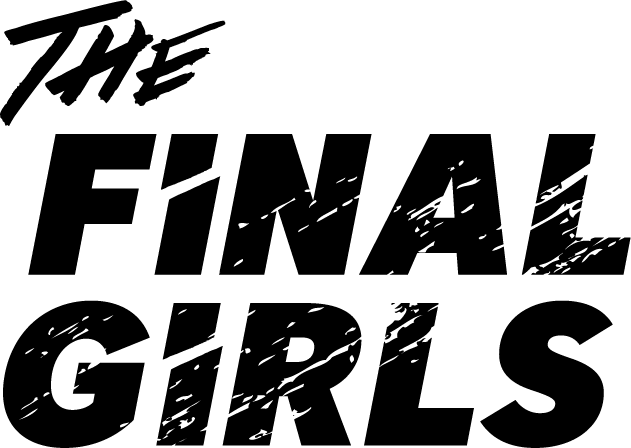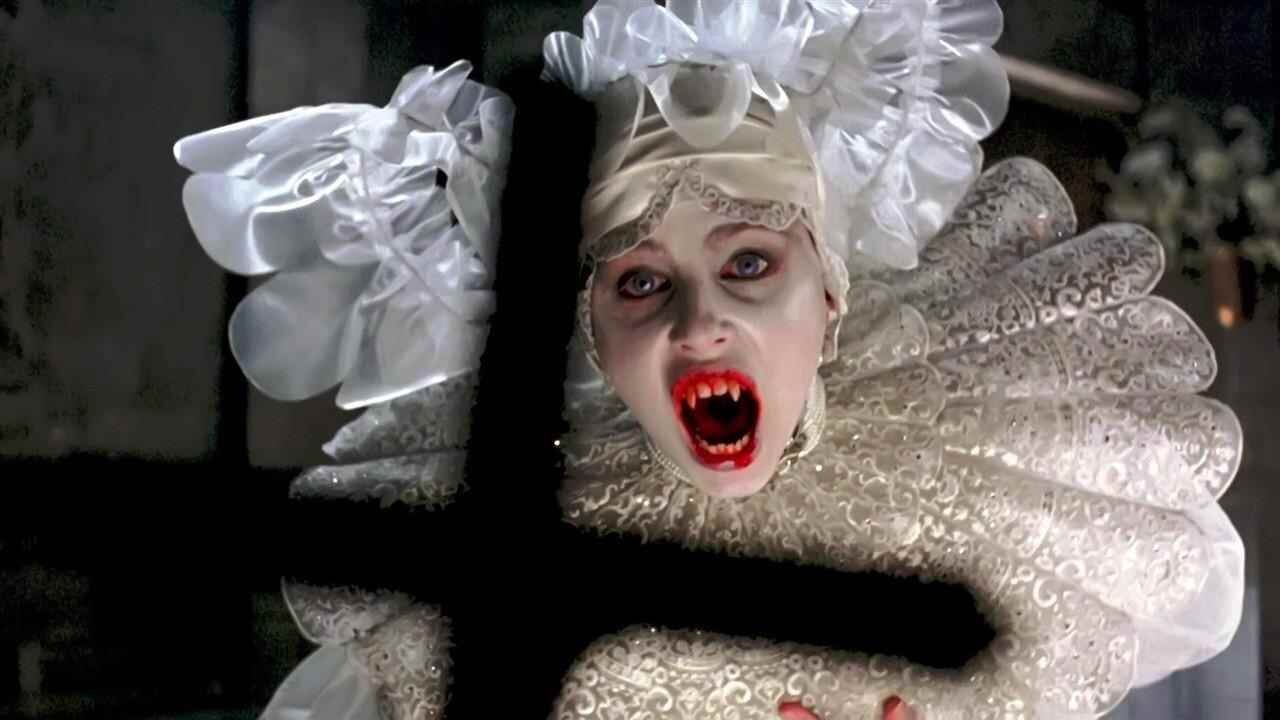The Emancipation of Lucy Westenra
By Katie Beech
How Dracula’s most overlooked main character set the stage for women’s modern horror movie portrayal of women. With no real development in her story, she is still stuck in the 19th century.
Arguably the most recognisable figure in horror cinema, Bram Stoker’s Dracula has gone through the big-budget remake machine at least once every ten years since Nosferatu (1922). Whether that’s faithful to the book adaptation, a modern-day interpretation, or a cartoon with the vampire as a hotel proprietor, it’s undeniable that Dracula remains as relevant today as he was a century ago.
So, amid Dracula’s ascension to a supervillain, the interpretations of characters such as Jonathan Harker, Van Helsing, and Renfield have also been open for deviations from how they were originally written. But, in nearly all adaptations of Dracula, the characterisation of Lucy Westenra has not progressed past its original portrayal in 1897. Yet her influence is felt in the way horror films were created over the next century.
In the novel, Dracula, Lucy Westenra is introduced with her letters to Mina Harker, her best friend, she’s the beautiful and popular daughter of a wealthy Victorian family. Through these letters, we get an insight into the mind of this – on the surface – quintessential Victorian girl; with her loving and sweet disposition she’s the counterbalance to the serious and intelligent Mina Harker.
So, Lucy’s sweet and optimal Victorian beauty attracts the attention of three potential suitors, Quincey Morris, Jack Seward, and Arthur Holmwood. During a depressing gothic novel, it appears that Lucy Westenra is living in a romantic comedy. She laments, “Why can’t they let a girl marry three men, or as many as want her, and save all this trouble?”
Only, in the sexually oppressed Victorian society, women were not meant to desire men. Lucy’s wish to ‘marry’ each of the men interested in her is as good as admitting to wanting sex with all three. So, in a novel with thinly veiled allusions to the late Victorian society within which it was written, this glimpse into her desire spells the end of the human Lucy Westenra.
Dracula’s first victim, there are clear allusions to her willingness, throughout the story, to be transformed into a vampire, a warning to other women about the dangers of your own desire.
Only doesn’t this sound all too familiar?
Horror movies are known for following a set formula and set of tropes, to the point of becoming a parody. The first and most important rule of surviving a horror movie, put plainly in Scream (1999), is that if you want to survive a horror movie, “Don’t have sex.”
The desire to have sex in horror films is often met with brutalisation and death, particularly with a phallic instrument, women receiving the harshest punishment. Very few horror movies go their first act without the brutal screams of their female characters. We need women to die to satisfy these tropes, but we have to evolve what we consider to be the woman who deserves to die.
In powerhouse slasher films like John Carpenter’s Halloween (1978) and Wes Craven’s A Nightmare on Elm Street (1984), the blonde bombshell is brutalised after she’s had sex. The theme of the often blonde-desired and sexually-in-control woman being the first significant kill of a horror movie has echoes of Lucy in them. They fit the tropes of frivolous women, at odds with the female lead, aka the Final Girl.
In this way, Lucy Westenra and Mina Harker are unshakable friends in Dracula, just as the two main females in the horror genre are often friends. They represent opposite sides of what’s considered the desirable woman; Mina’s meek but pious while Lucy’s charismatic but flirtatious.
Take Helen Shivers (Sarah Michelle Gellar) in the iconic I Know What You Did Last Summer (1997) primarily concerned with her beauty pageant despite the killer stalking her and her friends. In contrast, her friend Julie James (Jennifer Love Hewitt) is jumping at every possible noise.
The ‘Lucy Westenras’ of modern horror are always primarily concerned with themselves and their own desires. Essentially, we’re here, still dealing with the Madonna/Whore complex of old. We want women to be desirable, but heaven forbid they want any of the fantasises themselves.
Try as we might, horror cinema rarely deviates from this trope. Maybe post 2008, the woman isn’t blonde (Tormented, 2009) and perhaps she’s not having heterosexual sex (All Cheerleaders Die, 2013), but she’s still casual with her romantic feelings, giving love freely and almost never to the brooding male lead.
Because despite the eighty-year difference between the publishing of Bram Stoker’s Dracula and the heyday of slashers, our views surrounding female desire haven’t progressed as much as we’d really like to believe.
Dracula remakes rarely choose to deviate from this story: Lucy Westenra desires men outside of the prescribed monogamous Christian marriage, and she’s punished. Because of the thinly veiled allusion to sexual acts with vampiric activity, you can draw a line from Lucy’s apparent willingness to give herself over to Dracula.
After her death, Lucy’s transformation after she’s transgressed her ‘loveliness’ is one of the most vivid slayings in the story: a stake from each of her prospective lovers. Dracula’s story has been reinterpreted for TV and film over 100 times in the past century. Lucy is doomed to die and relive the same fate as she did in the book pretty much at every turn.
Symptomatic of the overarching problem with Lucy Westenra, in the first iterations, Lucy Westenra isn’t afforded her original name. Perhaps a sign of the times, she’s sequestered to the background, her only role is to be killed by Dracula.
One of the best-known Dracula retellings of recent years is easily Francis Ford Coppola’s 1992 version with Sadie Frost playing Lucy. Sadie Frost’s Lucy exemplifies the late 20th-century interpretation of this sexual desire. She’s coquettish, openly flirty, and childish in a way that proves to be eye-roll worthy, especially in comparison to Winona Ryder’s stoic Mina Harker.
Even in their clothes, it’s as if we’re seeing the ‘right’ way women should act. Winona Ryder being the embodiment of early ‘90s womanhood; even in period clothes, she’s restrained and straightforward – stunning but understated. Whereas Sadie Frost is decked out in an abundance of puffy sleeves and off the shoulder numbers. She’s lazy with sexuality.
The most notable exception to the Lucy arc is the 2013 short-lived NBC series. In this iteration, Lucy is given the edge of her unrequited love for her friend Mina. Her genuine affection added depth to Lucy’s manoeuvres through society, although the show still does a good job of highlighting Lucy as self-serving through a lot of her actions. But she’s led by her own gain, and, if not for the show’s premature cancellation, perhaps Lucy would have continued to be more fleshed out, as is the nature of good TV.
This new version of Lucy Westenra, one with more agency, less allusions about her sexual desire, and making it integral to the story, is in line with the way horror cinema and society have started to view sexuality. Less than a year after NBC’s Dracula, It Follows (2014) was released, its main character coded with all the same tropes of the proverbial Whore, yet she actively fights and wins against the monster designed to punish her for having sex.
The most recent Dracula offering exemplifies the frustrating need we have to punish Lucy Westenra for her desire still. The 2020 miniseries aired on the BBC earlier this year was a new Dracula story, with a gender-bent Van Helsing and a time-jump that gave us a 21st century version of Lucy.
In the 2020 BBC version, Lucy Westenra is a party girl; she takes selfies, loves social media, and lives a life of hedonism. She’s still got Jonathan Seward on the hook while accepting a proposal from Quincey Morris, seemingly unaware how this news crushes the young boy.
Her relationship with Dracula is consensual and even mutually affectionate; she’s ready to take on the role of a vampire when she dies. She’s not allowed an ounce of nuance, or even a second of conflict, when she’s faced with no longer being beautiful. This version of Lucy does not see any use for herself once she’s no longer attractive. Yes, this is a new version of Dracula, giving new takes on the character, but where Lucy is concerned, we’re getting more of the same – a character that often feels like a thinly veiled stand-in for a woman who rejected the writer some time in their youth.
Will Lucy Westenra ever get her time as the lead? Or will she always be destined to die? There’s something so compelling about a woman who can play and enjoys the game society has laid out for her and breaks all her own rules. Perhaps we’re not quite ready to have Lucy Westenra be the Final Girl, but characters like Tree in Happy Death Day (2017), Max in The Final Girls (2015), and Jay in It Follows show that we’re inching towards this concept. But as we settle into the 2020s, and the inevitable next Dracula retelling comes to us, a nuanced Lucy Westenra could be the game changer the story needs.
Katie Beech is a writer and a collector of old coffee cups from Manchester, England, and she has too many opinions on what’s in Primark on any given day.
We've been going independently for years now, and so far have self-financed every single project. In order to do more work, and continue supporting amazing filmmakers in the genre space, we've launched a Patreon.
If you are able to support us and the work we do on Patreon, we'd truly and deeply appreciate it.


